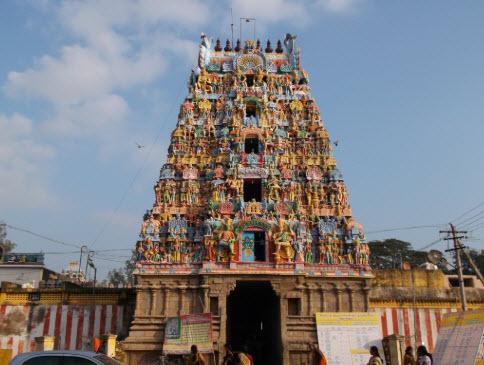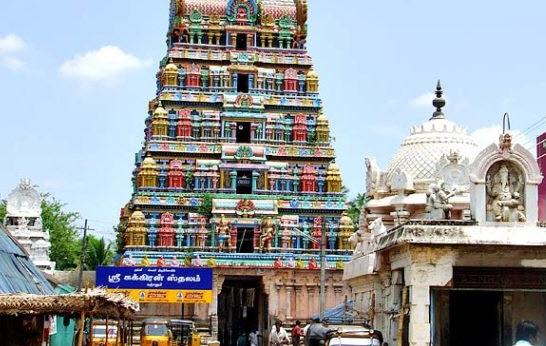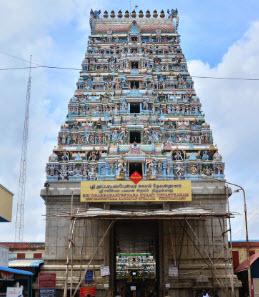Kumbakonam | One of the Best Places to Settle after Retirement
Kumbakonam, often known as the "temple town" of Tamil Nadu, boasts a rich cultural and historical heritage that dates back to the Sangam period. It is strategically located between the rivers Kaveri and Arasalar in the Thanjavur district. Historically, Kumbakonam rose to prominence during the Chola period between the 7th and 9th centuries and served as a capital city during the rule of the Medieval Cholas. Over time, it was influenced by the Pallavas, Pandyas, Vijayanagar Empire, and eventually the British, with each regime contributing to its architectural and cultural richness.
The town is particularly famous for the Mahamaham festival, a sacred event held once every 12 years, where devotees from across the world come to take a dip in the Mahamaham Tank. This festival is deeply linked to the 12 famous Shiva temples, such as the Kasi Viswanathar and Adi Kumbeswarar temples, and the five prominent Vishnu temples, including Sarangapani and Chakrapani temples, all located in and around Kumbakonam.
Kumbakonam’s religious significance is further enhanced by its numerous ancient temples, many of which are considered architectural masterpieces. Temples such as the Ramaswamy Temple, famous for its intricate stone carvings depicting scenes from the Ramayana, and the Mahalingaswamy Temple, where Lord Shiva is worshipped in the form of a self-manifested lingam, stand testament to the town's spiritual grandeur. Additionally, the town is also home to significant Navagraha temples, including the Suriyanar and Sri Naganathaswamy temples, which attract devotees seeking planetary blessings and relief from astrological afflictions.
During the British era, Kumbakonam emerged as a major center for education and Hindu culture, earning it the nickname "Cambridge of South India." It was a hub for scholars, poets, and artists, furthering its reputation as a town of knowledge and devotion. Even today, the blend of spirituality, history, and architectural brilliance makes Kumbakonam one of Tamil Nadu's most cherished towns, where centuries-old traditions continue to thrive.
Kumbakonam’s most significant temples and its major festival, the Mahamaham.
1. Kasi Viswanathar Temple
This temple is one of the 12 Shiva temples associated with the Mahamaham festival. Dedicated to Lord Shiva, the temple’s highlight is the shrine of Kasi Viswanathar and his consort, Goddess Visalakshi. The temple is revered by devotees seeking spiritual cleansing during Mahamaham. It is believed that taking a dip in the Mahamaham tank, followed by visiting this temple, helps cleanse one’s sins. The temple architecture is a fine example of Dravidian style, with its impressive gopurams (towers) and intricate carvings.
2. Adi Kumbeswarar Temple
Another prominent temple in Kumbakonam, Adi Kumbeswarar Temple is dedicated to Lord Shiva, who is worshipped here as Kumbeswarar. The lingam (Shiva symbol) enshrined in this temple is believed to have been created by Lord Shiva himself during the great deluge. This temple is central to the Mahamaham festival, and it plays a significant role in the holy rituals associated with it. The temple also houses a shrine dedicated to Goddess Mangalanayaki. The stunning architectural details, such as the majestic tower and the beautifully carved pillars, make this temple a visual treat for visitors.
3. Sarangapani Temple
One of the Divya Desams (108 sacred Vishnu temples), Sarangapani Temple is dedicated to Lord Vishnu. Built by the Nayakas, the temple boasts a 12-story gopuram that rises to a height of 150 feet, making it one of the tallest in South India. The sanctum is shaped like a chariot, symbolizing the movement of Lord Vishnu, who is depicted in a reclining posture, similar to his form at Srirangam. The temple’s grandeur is further elevated by the beautiful stone carvings and ancient inscriptions that narrate its storied past.
4. Nageswarar Temple
Known for its historical significance and spiritual importance, the Nageswarar Temple is dedicated to Lord Shiva. Built during the Chola period, the temple is unique for its axial alignment, allowing sunlight to directly fall on the lingam during specific days of the year. This phenomenon attracts devotees who see it as a divine occurrence. The temple is also famous for its Mahamaham connections and is one of the primary venues during the festival.
5. Uppiliappan Temple
Another Divya Desam, Uppiliappan Temple is dedicated to Lord Vishnu in the form of Uppiliappan (the elder brother of Lord Venkateswara). This temple is unique as it is one of the few temples where salt is not used in the offerings (prasadam) to the deity, following a divine legend. The temple’s deity is revered as the protector of devotees, and the temple itself is a prominent site for Vishnu devotees during Mahamaham.
6. Mahalingaswamy Temple
This temple is notable for its self-manifested Shiva Lingam (Swayambhu). According to legend, Lord Shiva appeared here as a flame to bless sages performing penance. The temple is a major attraction for devotees, especially during the Mahamaham, when thousands of pilgrims visit to seek blessings. The temple complex also includes a Shakti Peetha, dedicated to Goddess Ambai, and is famous for its various water bodies, such as tanks and wells.
7. Ramaswamy Temple
Known as the Southern Ayodhya, the Ramaswamy Temple is one of the few temples where the entire family of Lord Rama is enshrined together—Rama, Sita, Lakshmana, Bharata, Shatrughna, and Hanuman. Built during the 16th century, the temple’s exquisite carvings and paintings depict scenes from the Ramayana. The festival of Rama Navami is celebrated with great fervor here, drawing thousands of devotees. This temple is also closely associated with the Mahamaham festival).
8. Dhenupureeswarar Temple
Dedicated to Lord Shiva, this temple is famous for its association with various legends from Hindu mythology. The temple houses a sacred well, Koti Theertham, created by Lord Rama, and is considered spiritually equivalent to the sacred Dhanushkodi near Rameswaram. The temple attracts devotees seeking relief from astrological doshas (afflictions), particularly Rahu and Kethu doshas
Mahamaham Festival
The Mahamaham festival, celebrated once every 12 years, is Kumbakonam’s most prominent religious event. This grand celebration involves ritual bathing in the sacred Mahamaham tank, which is believed to cleanse devotees of their sins. Twelve Shiva temples, including the Kasi Viswanathar and Adi Kumbeswarar temples, and five Vishnu temples participate in this event, making it a city-wide festival that brings together people from across the world
The festival’s legend is linked to Lord Shiva, who is said to have destroyed a pot (kumbha) containing the essence of creation at the Mahamaham tank. It is believed that the pot’s contents spilled into the tank, making it sacred. The Theerthavari, or the holy dip, is performed in this tank by devotees and priests, who carry water from the holy rivers of India, including the Ganges, Yamuna, and Saraswati, to pour into the tank
During the Mahamaham, the city comes alive with vibrant processions, religious rituals, and cultural programs. Pilgrims visit the 12 Shiva temples and the Mahamaham tank, which is surrounded by 16 mandapams (shrines), each dedicated to different deities. The festival concludes with the grand procession of temple deities, a sight that is both spiritually uplifting and visually spectacular Dharshan.
Kumbakonam’s temples and festivals represent a perfect blend of spirituality, history, and cultural grandeur. From the architectural marvels of the temples to the deeply rooted rituals of the Mahamaham festival, the town offers a deeply enriching experience for devotees and history enthusiasts alike. Whether you're visiting for a pilgrimage or to explore its rich heritage, Kumbakonam promises an unforgettable journey through the spiritual heart of South India.
Navagraha Temples around Kumbakonam
Navagraha Temples around Kumbakonam
The Navagraha temples in Tamil Nadu, particularly around Kumbakonam, are an important pilgrimage circuit dedicated to the nine celestial bodies in Hindu astrology, also known as the "Navagrahas." These temples are believed to have been established during the Chola dynasty, with most of them dating back to the 7th to 9th centuries, although the Surya (Sun) temple was constructed around the 11th or 12th century C.E.
The Legend Behind the Navagraha Temples
As per Hindu mythology, Sage Kalava, afflicted with multiple ailments, including leprosy, fervently prayed to the nine planet deities (Navagrahas) for relief. The Navagrahas, moved by his devotion, granted him a cure. This act displeased Lord Brahma, who believed that the planets did not possess the authority to bestow boons upon humans. In his anger, Brahma cursed the Navagrahas to suffer from leprosy themselves and exiled them to Vellurukku Vanam (the modern-day location of the Surya temple at Suryanar Kovil). The planets then turned to Lord Shiva for relief. Shiva appeared and relieved them of the curse, granting them the power to remain at their respective abodes and bless devotees who worship them.
The Temples and Their Locations
Each Navagraha is associated with a specific temple, though most of these temples are primarily dedicated to Lord Shiva. Only the Suryanar Kovil, located in Suryanar Kovil village, is dedicated exclusively to Surya (the Sun God), with the other Navagrahas present as attendant deities. The Navagraha temples are spread across different villages near Kumbakonam:
- Suryanar Kovil (Surya) – Suryanar Kovil (dedicated to the Sun)
- Thingalur (Chandra) – Kailasanathar Temple (dedicated to the Moon)
- Vaitheeswaran Koil (Mars) – Vaitheeswaran Temple (dedicated to Lord Shiva as Vaidyanatha)
- Thiruvengadu (Mercury) – Swetharanyeswarar Temple
- Alangudi (Jupiter) – Abathsahayeswarar Temple
- Kanjanoor (Venus) – Agneeswarar Temple
- Thirunallar (Saturn) – Dharbaranyeswarar Temple
- Thiru Nageswaram (Rahu) – Naganathaswamy Temple
- Keezhaperumpallam (Ketu) – Naganathar Temple
Each temple is considered to be the specific abode of one of the Navagrahas, making it a pilgrimage site for devotees seeking planetary blessings, relief from astrological afflictions, or protection from malefic planetary influences.
Architectural Significance
The temples exhibit classic Dravidian architecture, featuring intricate sculptures, towering gopurams, and richly detailed carvings. The Suryanar Kovil, for instance, is known for its 5-tier gopuram, a hallmark of Chola architecture. Many of the other temples also have distinct historical and architectural importance, housing inscriptions and sculptures that provide insights into the craftsmanship and spiritual devotion of the Chola era.
Worship and Festivals
The Navagraha temples are not just visited for daily worship but are also central to several festivals, especially those related to planetary movements and astrological events. Devotees perform rituals and offer prayers to mitigate the negative effects of planetary alignments, seeking good fortune and spiritual upliftment.
The temples continue to play an important role in Tamil Nadu’s religious landscape, drawing pilgrims from across India and beyond, particularly during the special festival periods related to the planets.
These temples, collectively, represent not just places of worship but also serve as cultural and historical touchstones, reflecting the region’s rich architectural and spiritual heritage.





















